I’ll never forget the day our shipment of yogurt spoiled. The cooling system failed halfway through the drive. Everything was lost.
That day taught me how important it is to really understand how refrigerated trailers work. I’ve been in this field for years, and I’ve had to learn the hard way.
You’re here because you want to understand how a refrigerated trailer works. And that’s a smart move.
In this article, I’ll walk you through how a refrigerated trailer keeps goods cold, what components are involved, and how the system works from start to finish.
By the end, you’ll have the knowledge you need to understand what’s going on inside that trailer—whether you’re hauling frozen goods or managing logistics.
Let’s jump in!
1. What Is a Refrigerated Trailer?
A refrigerated trailer is a temperature-controlled box on wheels. It’s built to transport goods that must stay cold, frozen, or at a steady temperature during long trips.
These trailers are a key part of cold chain logistics, making sure that items like food, medicine, and flowers arrive fresh and safe.
What Makes a Trailer “Refrigerated”?
Unlike standard trailers, refrigerated trailers (often called reefer trailers) have a built-in cooling unit. This unit is powered by a diesel engine or electric power and works nonstop to keep the air inside at the right temperature.
The walls, floors, and ceiling are insulated to trap cold air and block outside heat.
What It Carries
Refrigerated trailers carry items that can’t handle heat or temperature swings. These include:
- Frozen meats and seafood
- Fresh produce
- Dairy products
- Baked goods
- Pharmaceuticals
- Flowers and plants
Some trailers are set to deep-freeze mode. Others just need to hold a cool, steady temperature. That’s why temperature settings can be adjusted to suit different types of loads.
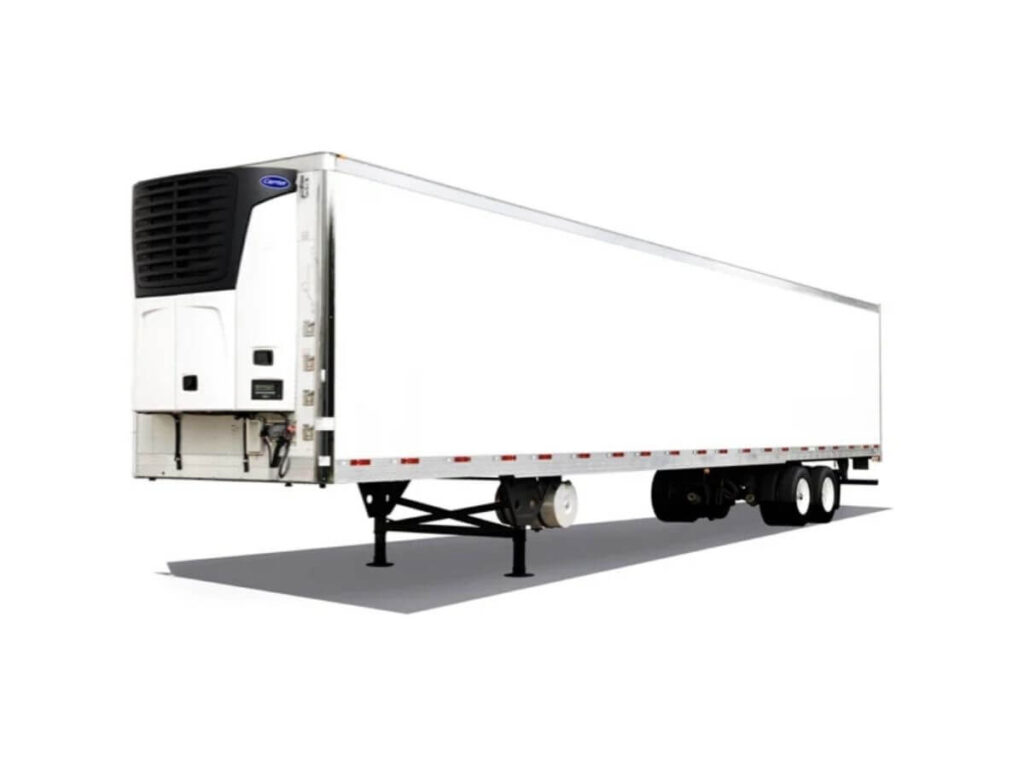
2. How Does a Refrigerated Trailer Work
The first time I checked the inside of a running reefer trailer, I was surprised by how cold and steady it felt. No hot spots. No sudden changes. Just a calm, cold environment built to protect the load. That moment stuck with me.
Refrigerated trailers work by removing heat from inside the trailer and pushing in cold air. It’s not just blowing cold air—it’s a full system working together to keep everything at the right temperature.
Cooling Process Explained
The cooling unit starts with a compressor, which takes low-pressure gas and squeezes it into a high-pressure state. That gas moves through the condenser, where it cools down and becomes a liquid by releasing heat. The cold liquid then flows to the evaporator, where it absorbs heat from inside the trailer. This cools the air, and fans push that chilled air into the cargo space.
Keeping the Cold Air Moving
Good airflow is just as important as cold air. Fans help push the cooled air throughout the trailer, from front to back. Since cold air is heavier, it drops down and spreads evenly across the load. The system also pulls warm return air back to the unit to cool it again—keeping temperatures consistent across the trailer.
3. Types of Refrigerated Trailers and Their Uses
Honestly, I thought all refrigerated trailers were the same. Cold is cold, right? I quickly learned that wasn’t true. Different goods need different temperatures, different loading setups, and different trailer features. Picking the wrong trailer doesn’t just make things harder—it can cost you an entire load.
Knowing the right trailer type for your cargo helps you work smarter, cut losses, and stay reliable. Below are the most common types I’ve worked with, along with how and when they’re best used.
Single-Temperature Trailers
This is the most basic and widely used type. The entire trailer stays at one set temperature—cold or frozen. It’s best for hauling large batches of similar goods like frozen meats, dairy, or seafood. I’ve used this type for years when doing long hauls with full loads that need steady cold conditions.
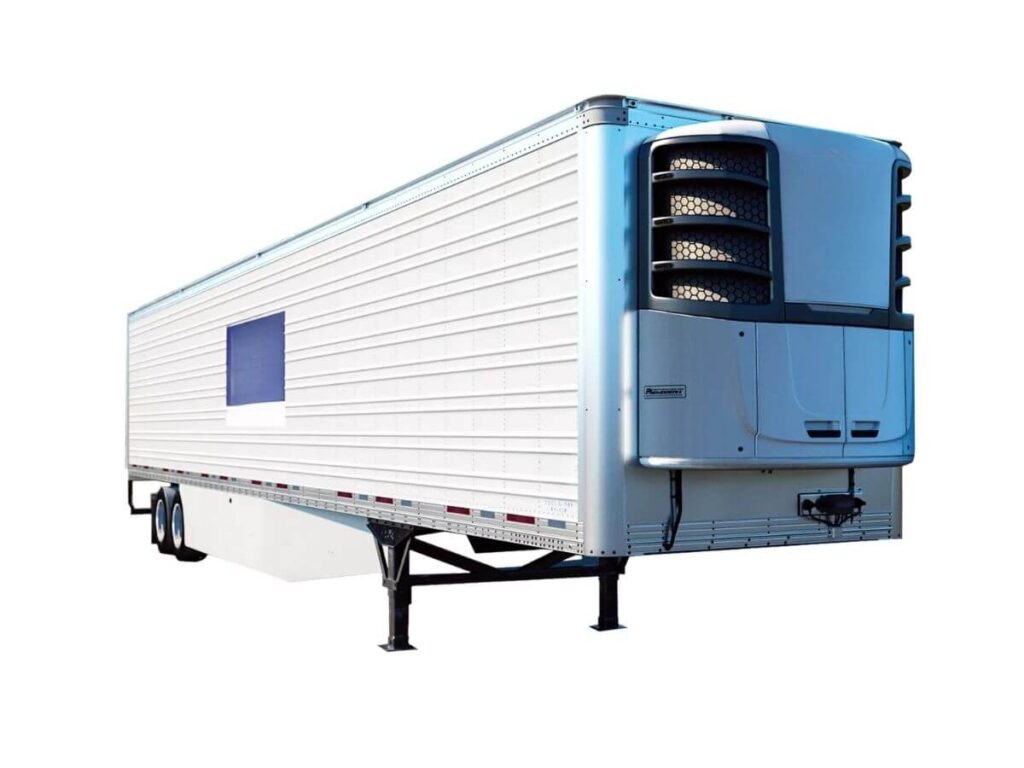
Multi-Temperature Trailers
These trailers come with dividers and separate temperature zones. You can haul frozen items in one section and chilled or dry goods in another. It’s helpful when you’re doing deliveries to several customers with different needs. Grocery chains often use these because they carry frozen, fresh, and shelf-stable items in a single trip.
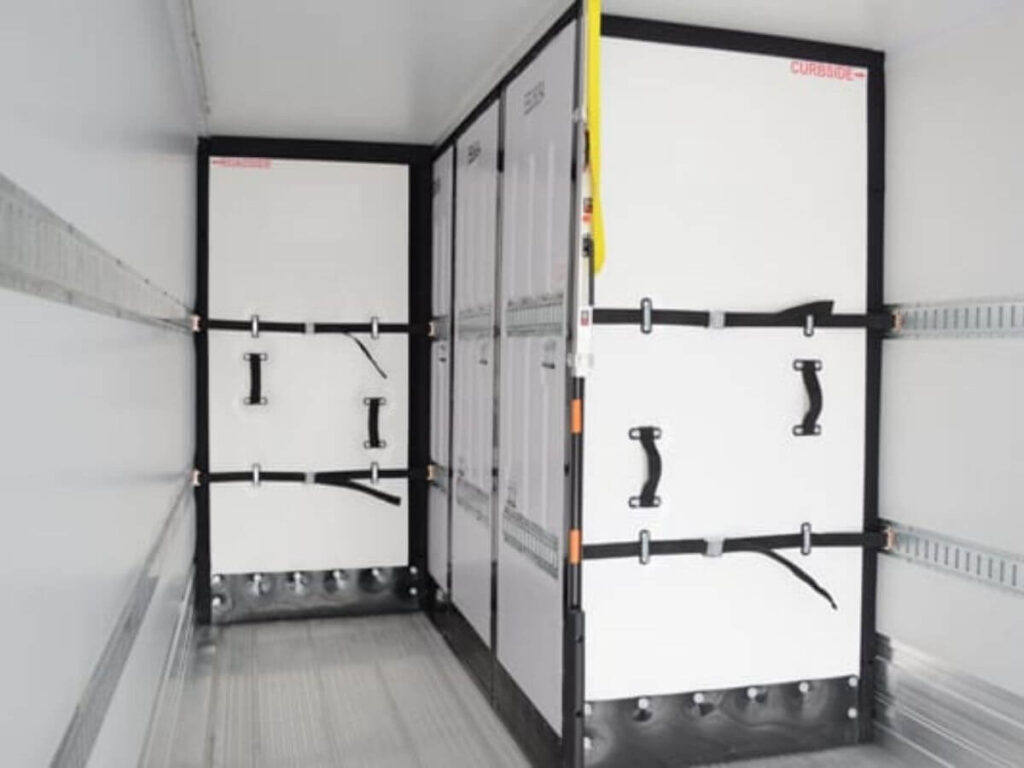
Roll-Up Door Trailers
These trailers have vertical doors that roll upward, making loading and unloading quicker—especially in tight urban docks. They’re handy for multi-stop delivery routes. But I’ve learned they don’t hold cold air as well as trailers with swing doors. I usually use them for short-distance routes where speed matters more than long-term temperature hold.
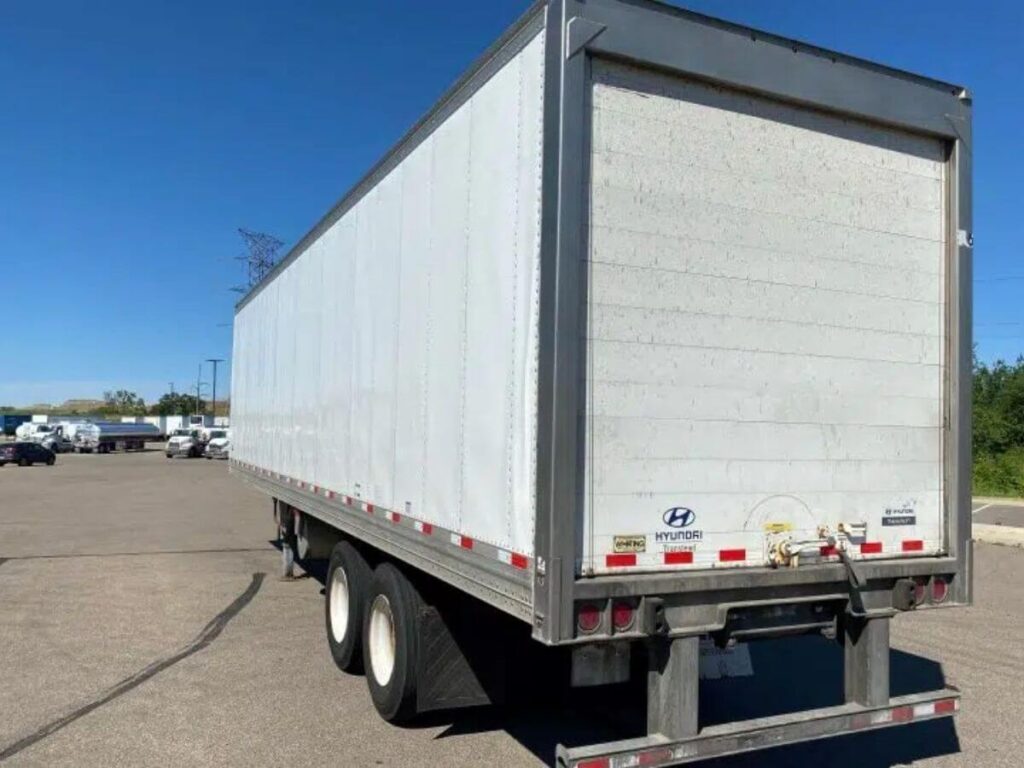
Pharma-Grade Trailers
Some loads—like medicine and vaccines—require tighter control. Pharma-grade reefers offer extra insulation, more accurate cooling, and even temperature tracking during the trip. These trailers help meet safety rules set by health and drug regulators. I’ve used these for medical shipments where even a few degrees can ruin the load.
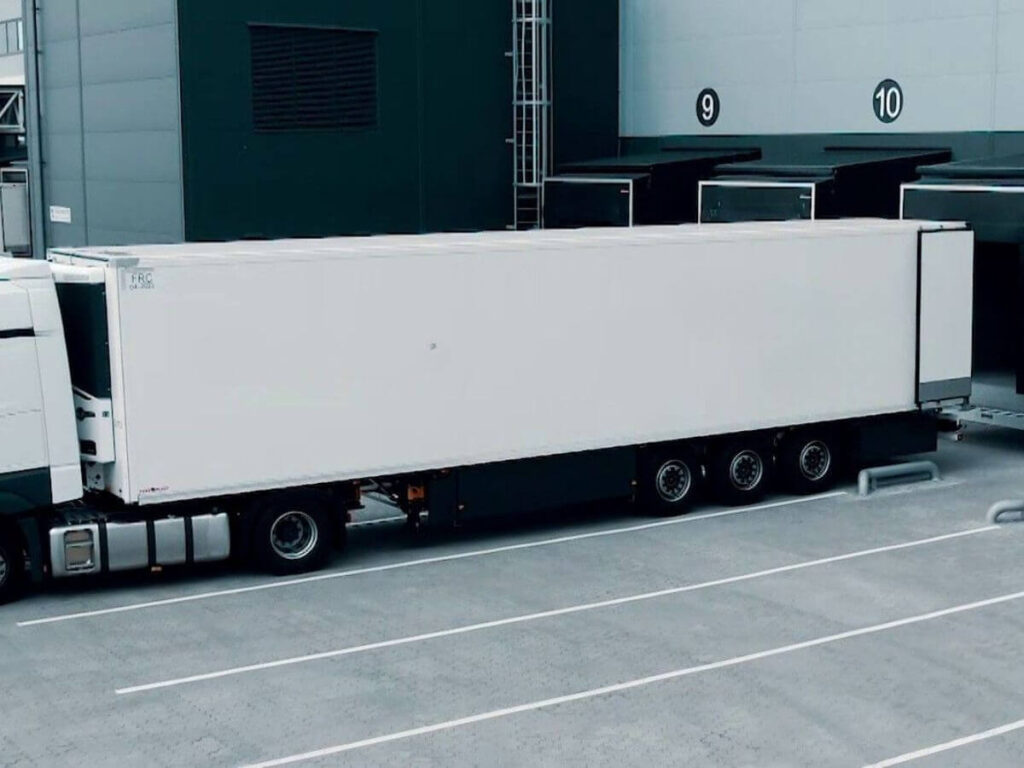
Narrow or Short Refrigerated Trailers
These smaller trailers are great for tight delivery areas, like city streets or underground docks. They’re easier to back into narrow spaces and good for quick drop-offs. I’ve used them for floral deliveries, bakeries, and smaller retail shops that don’t need full truckloads.
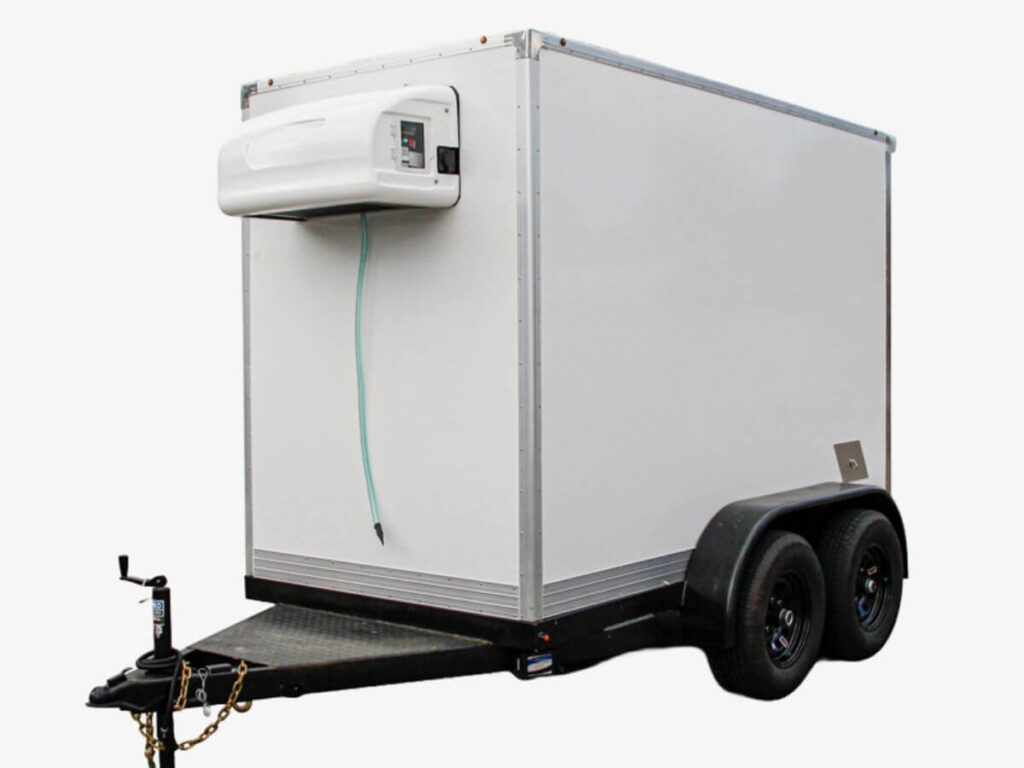
Custom or Specialty Reefers
Some trailers are built for specific industries. Think of trailers with side doors, liftgates, or extra shelving. They help with faster unloading or carrying items that need to stay upright. I’ve used a few with added features when delivering delicate items like cakes or high-value seafood.
Choosing the right refrigerated trailer isn’t just about keeping things cold—it’s about picking the setup that works best for your cargo, your route, and your job. Once you get that right, the whole job runs smoother.
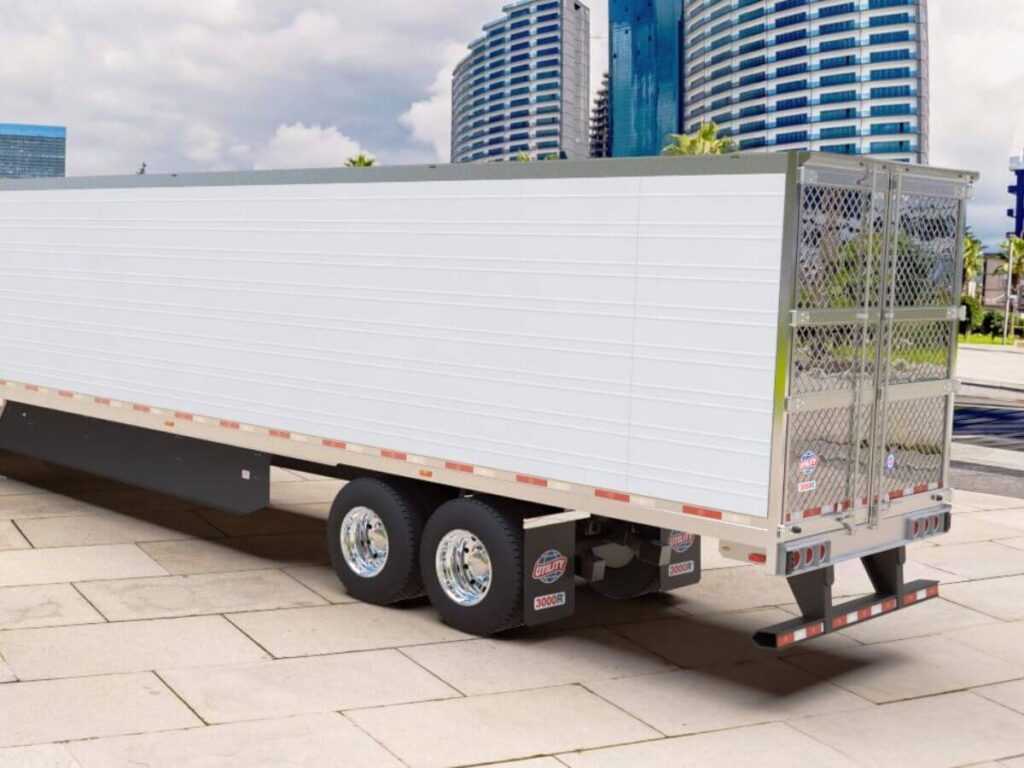
4. Common Industries That Use Refrigerated Trailers
Refrigerated trailers aren’t just for food. I’ve worked jobs where they showed up on construction sites, mine roads, and retail docks. Each industry uses them in a different way—but the goal is always the same: keep the load at the right temperature.
Here are some of the common industries that use refrigerated trailers:
- Construction Companies: Some building materials need controlled temperatures, especially in extreme weather. Cold storage trailers help keep sealants, adhesives, and job-site supplies stable during long projects.
- Mining Industry: In remote mining areas, refrigerated trailers often carry food, water, and medicine for workers. I’ve delivered to mining camps where the trailer also acted as a mobile walk-in cooler.
- Logistics and Transportation Companies: Freight companies move reefer trailers across borders and long routes. These hauls can include anything from chilled groceries to sensitive electronics that can’t overheat.
- Manufacturers and Industrial Companies: Certain products—like industrial coatings, chemicals, or components—must stay cool in transit. Reefers help reduce waste and protect quality.
- Agriculture and Food Industries: Fresh produce, dairy, and meat all depend on stable temperatures. Farmers and food processors use reefers to keep goods fresh from farm to store. If you are in this indutry and looking for the best refrigerated trailers, choose Rhinotrail. We offer the best trailers made from premium steel and anti-corrosion coatings withstand harsh environments and heavy loads.
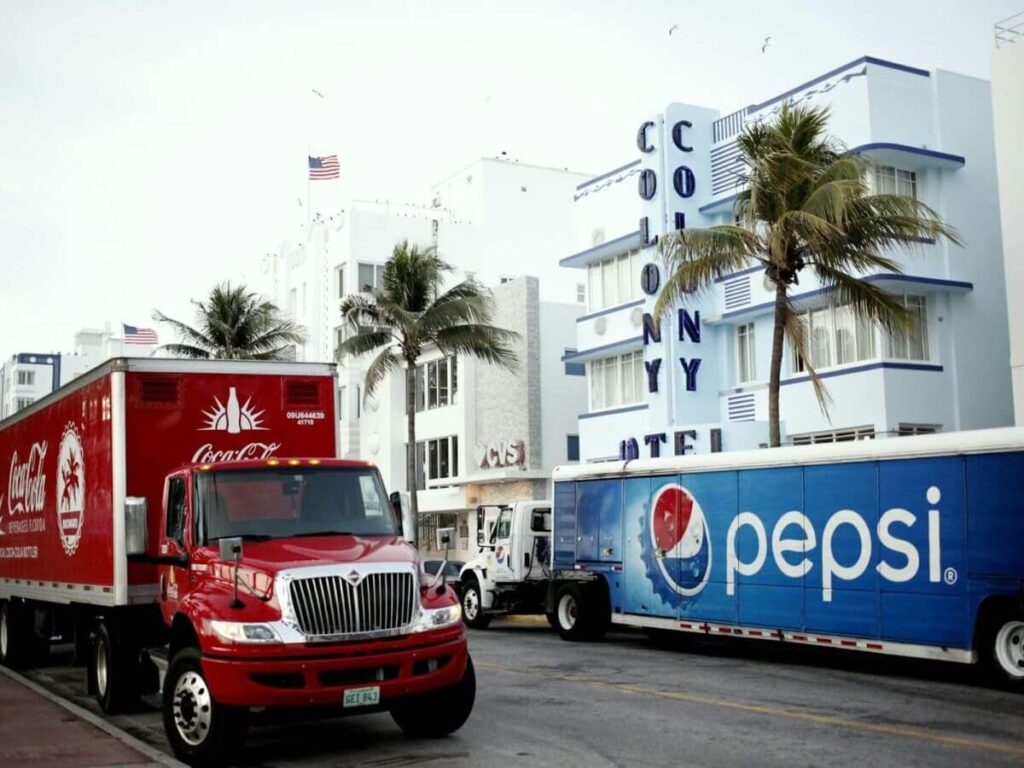
5. Maintenance and Troubleshooting Tips
Refrigerated trailers work hard, and they don’t ask for much—just a little attention now and then. In my early days, I didn’t always take maintenance seriously. I thought if the trailer was running and the air felt cold, everything was fine. But that thinking cost me. One spoiled load taught me how small things—like a faulty seal or clogged coil—can quietly cause big problems.
Since then, I’ve picked up habits that save time, money, and cargo. You don’t need to be a mechanic to spot early warning signs. Just being observant and checking key parts regularly can prevent delays, spoilage, and breakdowns. Below are some of the maintenance and troubleshooting checks that have made the biggest difference in my own work.
Check Temperature Settings Daily
- Look at the Control Panel: Always check the display before loading and after every stop. It tells you if the unit is holding the right temperature.
- Match Cargo Needs: Make sure the set temperature fits the type of goods you’re hauling. Frozen goods need lower settings than produce.
- Watch for Alarms: Any blinking lights or warning beeps mean something isn’t right. It’s better to stop and check than risk spoilage.
- Restart if Needed: Sometimes the system may need a quick reset to fix a glitch. Follow the manufacturer’s steps if the display looks off.
Inspect the Door Seals
- Check for Cracks or Gaps: Worn or damaged seals let in warm air. Look closely at all edges of the doors.
- Use a Flashlight Test: Close the doors and shine a light from inside. If light escapes, so does cold air.
- Look for Moisture: Water or frost near the seal could mean poor insulation. It often shows where air is leaking.
- Replace Damaged Seals: Don’t wait. Bad seals get worse over time and lead to bigger cooling issues.
Clean the Evaporator and Condenser Coils
- Inspect Coil Condition: Dust, grease, or grime builds up fast, especially after long trips. Check both sets of coils regularly.
- Use the Right Tools: Compressed air and a soft brush work well. Avoid sharp tools that might bend or damage the fins.
- Clean Monthly: A simple cleaning once a month keeps air moving and the system running strong. In dusty areas, clean more often.
- Watch for Ice Buildup: If coils freeze over, airflow drops fast. Stop the unit and defrost before continuing.
Monitor for Error Codes
- Read the Display Screen: Most modern units will show a code when something’s wrong. Always check for these before starting your trip.
- Keep a Code Guide Handy: A quick reference sheet helps you understand what each code means. Some are minor, some are urgent.
- Track Recurring Issues: If the same code keeps showing up, there’s likely a deeper problem. Schedule a repair as soon as you can.
- Use the Codes Wisely: When calling a technician, sharing the exact code helps speed up diagnosis and repair.
Maintenance isn’t just a chore—it’s part of protecting your work. A few smart habits can help you avoid breakdowns, keep your trailer running longer, and protect the load that people are counting on.
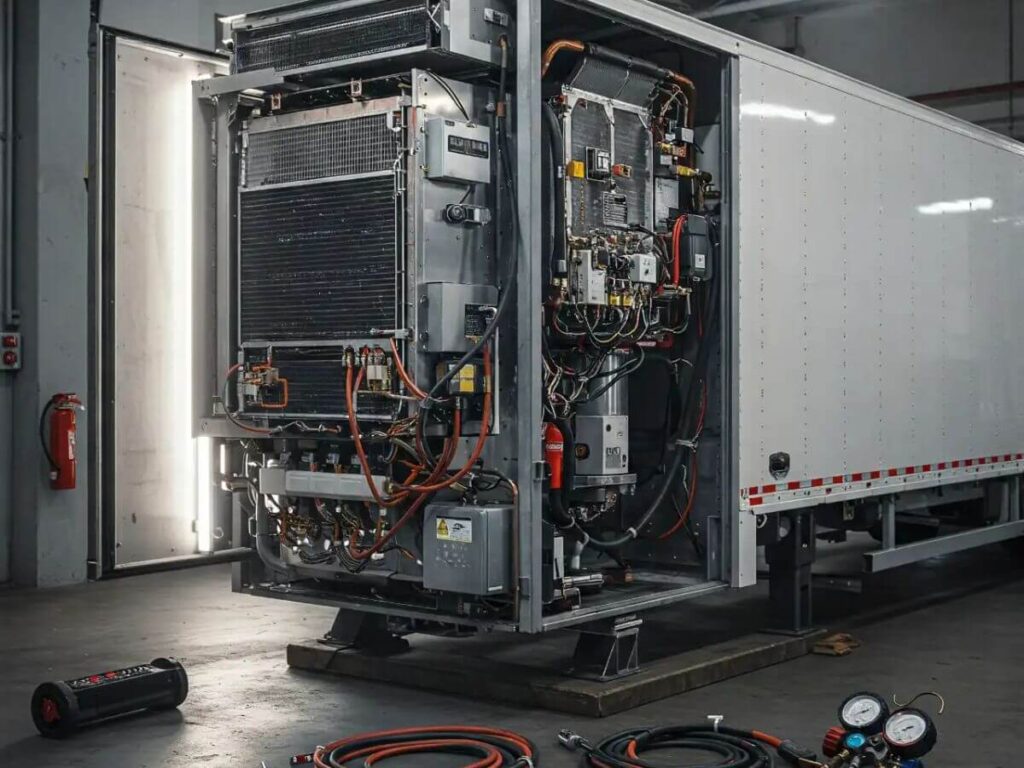
6. Refrigerated Trailers vs. Refrigerated Trucks
Wanna know why some hauls are better with a refrigerated trailer while others work best with a refrigerated truck? This side-by-side comparison lays it out clearly—so you can choose what fits your job best.
| Feature | Refrigerated Trailers | Refrigerated Trucks |
| Definition | Trailer with cooling system pulled by a semi-truck. | All-in-one truck with built-in cooling unit. |
| Size & Capacity | Larger, handles full truckloads and pallets. | Smaller, better for light or mixed loads. |
| Common Use | Cross-border, long-distance, bulk shipping. | Local delivery, urban drops, quick hauls. |
| Cooling Performance | Powerful cooling for longer trips and deep freeze loads. | Moderate cooling for short trips or fresh goods. |
| Temperature Zones | Supports multi-temp zones in one trailer. | Usually single-temp; some high-end models offer zones. |
| Power Options | Diesel engine and electric standby at docks. | Runs on diesel, tied to truck engine or separate small unit. |
| Fuel Efficiency | Uses more fuel due to size and cooling load. | More fuel-efficient for smaller, shorter routes. |
| Maneuverability | Hard to move in tight areas; better for highways and large docks. | Easy to drive in cities, tight parking lots, or narrow roads. |
| Driver Requirements | Requires a CDL and a larger rig. | Can be driven with a regular commercial license. |
| Maintenance Complexity | More moving parts—tractor, trailer, and refrigeration unit. | Easier to maintain with fewer components. |
| Storage Flexibility | Trailer can be dropped and used as cold storage. | Can’t separate truck from cooling unit. |
| Initial Cost | Higher upfront cost but better long-term value for bulk shipping. | Lower cost, ideal for small business or startup operations. |
7. How to Choose the Right Refrigerated Trailer for Your Needs
Choosing the right refrigerated trailer isn’t just about specs on a sheet. It’s about understanding how your workday looks, what your cargo needs, and how far you drive. I’ve picked trailers that were too big for the route or didn’t hold the temperature long enough. Those mistakes weren’t fun—and they weren’t cheap.
If you’re in the same spot, trying to figure out what works best, you’re not alone. There’s no one-size-fits-all trailer. But there is one that fits your daily routine, your load, and your stops. Here’s how to find it.
Know Your Cargo Type
Start by thinking about what you haul most often. Frozen meat needs deep cold, while fresh fruits just need steady, cool air. Medicines and floral products can be sensitive to even small changes. Knowing your product’s needs helps you choose the right cooling system and insulation level.
At Rhinotrail, we can help you select or customize the ideal refrigerated trailer—built with precise temperature control, durable insulation, and region-specific specs to ensure your cargo stays fresh and compliant from pickup to delivery.
Check Load Size and Frequency
Some trailers are made for heavy, full loads. Others work better for lighter or partial deliveries. If you run daily routes with different types of cargo, you may need something more flexible. Matching trailer size with how often and how much you haul keeps your trips efficient.
Consider Route Distance
Long-distance hauls need powerful and fuel-efficient cooling units. They must hold the temperature steady for hours, even days. Short trips through the city don’t need as much power, but quick access and easy parking matter more. Think about how far—and how often—you drive.
Look at Temperature Zones
Some trailers offer just one temp setting throughout. That’s fine if your cargo type stays the same. But if you deliver frozen and chilled items together, a multi-temp trailer helps keep both in good condition. These trailers let you divide the load into separate cooling zones.
Think About Access and Parking
Where you drive and park matters more than people think. Large trailers are hard to move in tight alleys or small lots. Roll-up doors may help in city drops, while swing doors work better at big docks. Choose a setup that fits your delivery location.
At the end of the day, the right refrigerated trailer makes your job smoother—and helps protect every load you haul. Don’t rush the decision. Think about what your days really look like, then pick the trailer that works with you, not against you.
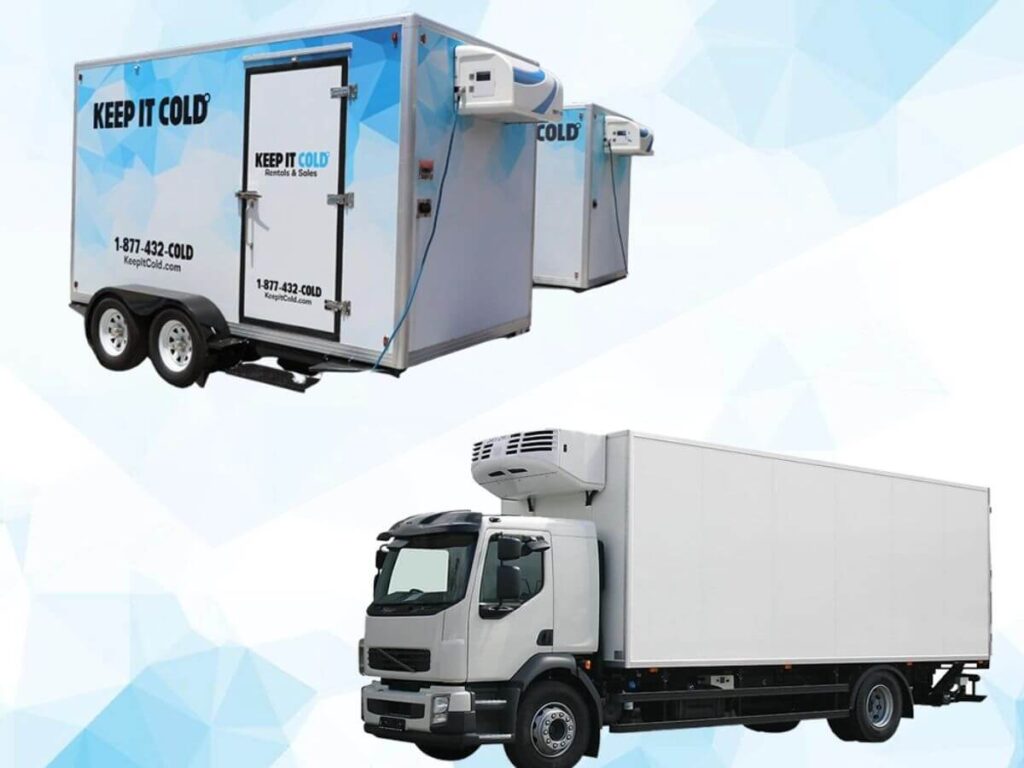
Conclusion
Now you know what a refrigerated trailer is, how it works, who uses it, and how to choose the right one. Whether you’re hauling meat across the country or fresh greens across town—your trailer matters.
Ready to take the next step?
At Rhinotrail, we’ll help you pick the trailer that fits your needs—not someone else’s.
Contact us today and let’s keep your cargo cold, safe, and right on time.


